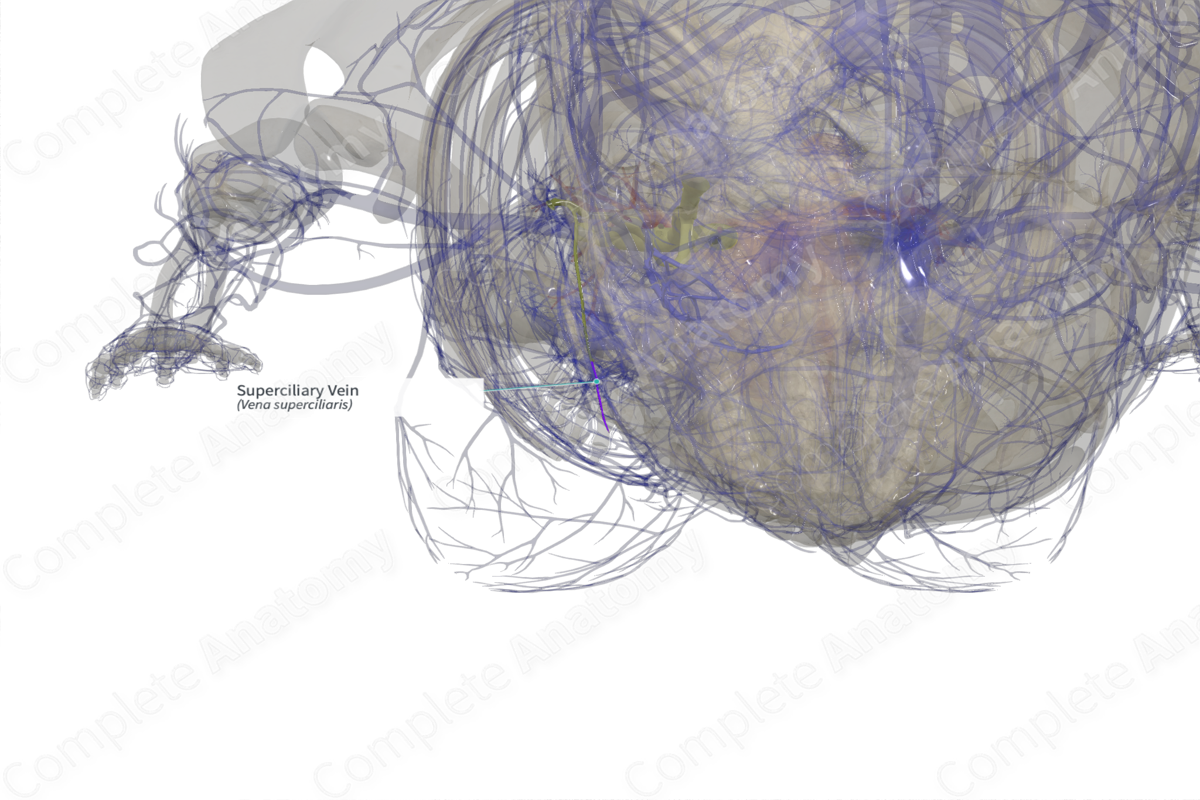
Quick Facts
Origin: From the eyebrow or the upper eyelid.
Course: Runs posteriorly across the temple to drain into branches of the middle temporal vein.
Tributaries: None.
Drainage: Muscles and superficial tissues in the temple region.
Related parts of the anatomy
Origin
The superciliary vein originates from the eyebrow or the upper eyelid.
Course
The superciliary vein runs posteriorly across the temple to unite with the zygomaticotemporal vein, thus, forming the middle temporal vein.
Tributaries
There are no named tributaries; however, the superciliary vein forms a venous web over the temple region by connecting with other tributaries of the middle temporal vein, including zygomaticotemporal deep temporal veins (Tansatit, Apinuntrum and Phetudom, 2015).
Structures Drained
The superciliary vein drains the muscles and superficial tissues in the temple region into middle temporal vein. From the middle temporal vein, the blood is eventually poured into the superficial temporal vein.
References
Tansatit, T., Apinuntrum, P. and Phetudom, T. (2015) 'An Anatomical Study of the Middle Temporal Vein and the Drainage Vascular Networks to Assess the Potential Complications and the Preventive Maneuver During Temporal Augmentation Using Both Anterograde and Retrograde Injections', Aesthetic Plast Surg, 39(5), pp. 791-9.
Learn more about this topic from other Elsevier products
Vein

A venous sinus is a vein with a thin wall of endothelium that is devoid of smooth muscle to regulate its diameter.




